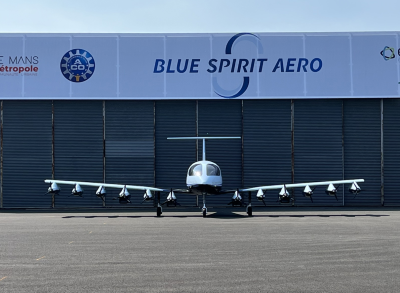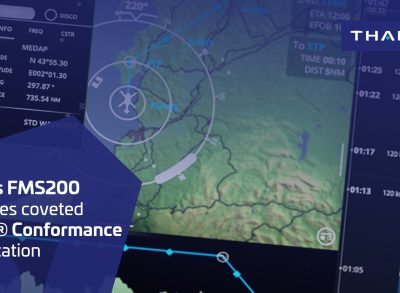Managing missions intelligently
Thales is already working on the early stages of Intelligent Mission Management (IMM) research, developing algorithms that would help predict and optimise trajectories so as to create leaner missions.

IMM takes into account key factors and constraints during an aircraft’s entire mission, from gate to gate.
Traditionally, Mission Management has mainly been driven by aircraft performance, with Flight Management System (FMS) as the embedded solution. But today, several other factors must be added to the equation: the increase in air traffic, the need for a leaner mission, and the imperative for greener transportation.
“The aim is to find a comprehensive and affordable trade-off between these various factors”, Thales System Architect Expert Joël Bosson said. “The IMM solution should simultaneously account for all the constraints affecting each and every flight in order to offer the crew a simple solution that is easy to manage.”
The big picture
IMM is above all about adopting a global view. Today, for example, when arriving at busy airports, aircraft frequently take on a holding pattern. With IMM, the aim is to avoid this kind of scenario by looking at the big picture: it is preferable to manage speed or to slightly delay a flight on the ground rather than have it consume extra fuel while awaiting clearance for final approach. IMM in this way helps create a leaner mission.
IMM also strives to create a greener mission – by, for instance, improving links between power management and mission management – and to account for the predicted increase in air traffic over the next 20 years. Initiatives such as SESAR (EU) and NextGen (US) have set out requirements for the future of the industry, and these will set the standards for IMM.
Putting into practice
“Thales, as a leader in both onboard and ground intelligence, is well-positioned to create the kind of synergies IMM demands”, Bosson said. “Our experience in cockpit design will also prove invaluable as the role of the pilot is redefined.”
With technological innovations, the crew will increasingly become supervisors of the system – with the flexibility to accept or refuse the changes it proposes and to take a more active role in selecting optimum flight paths, he explained.
This research has been specific to the military sector, but findings will eventually be used to develop a broad IMM approach across all of Thales’s activities.
©Thales
Intelligent Mission Management brings promise of mid-air refueling
This animated video shows how IMM’s 4D-trajectory flying capability would allow us to envisage a robust meeting point between a commercial aircraft flying a mission and its refueler. An airborne refuelling station like this would lead to much lighter long range aircraft.




